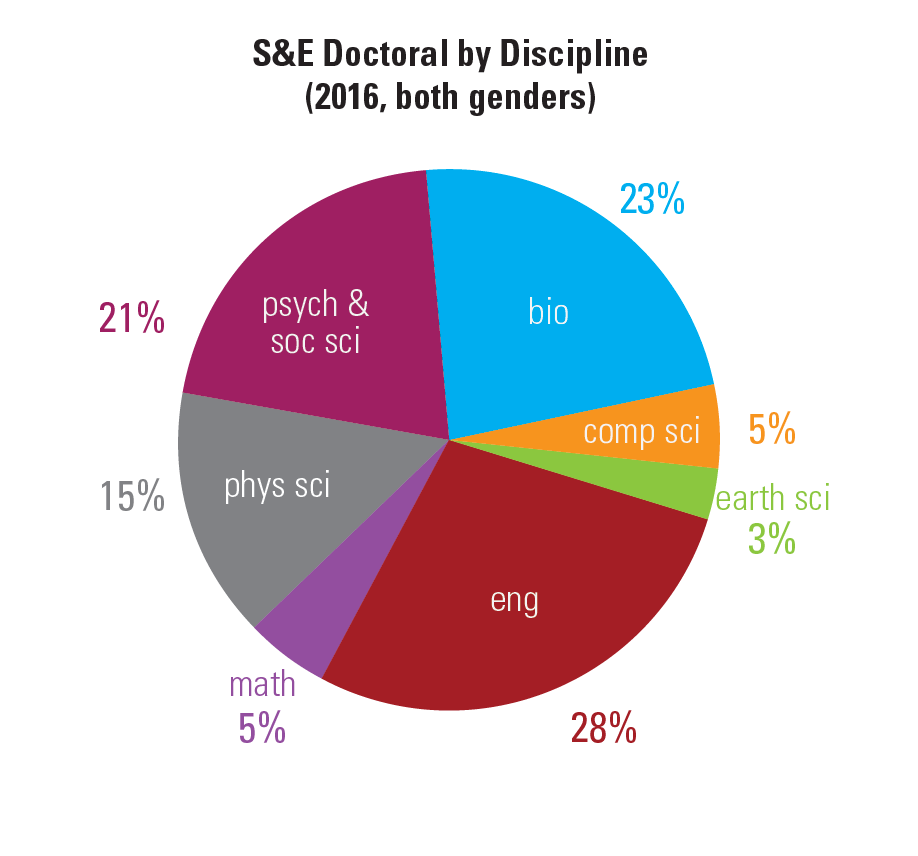
Science & Engineering Degree Attainment – 2017
From 2006 to 2016, degree completion in the so-called “hard sciences” increased in prevalence for both genders. Excluding social sciences and psychology, the percentage of bachelor’s degrees accounted for by S&E disciplines increased five percentage points for men, and two percentage points for women.
Growing Prevalence of the “Hard Sciences”
Excluding social sciences and psychology, the percentage of master’s degrees accounted for by S&E disciplines increased three percentage points for men, and two percentage points for women. For every combination of degree level and gender depicted in this chart, the share of degrees accounted for by social sciences and psychology declined over the last ten years.
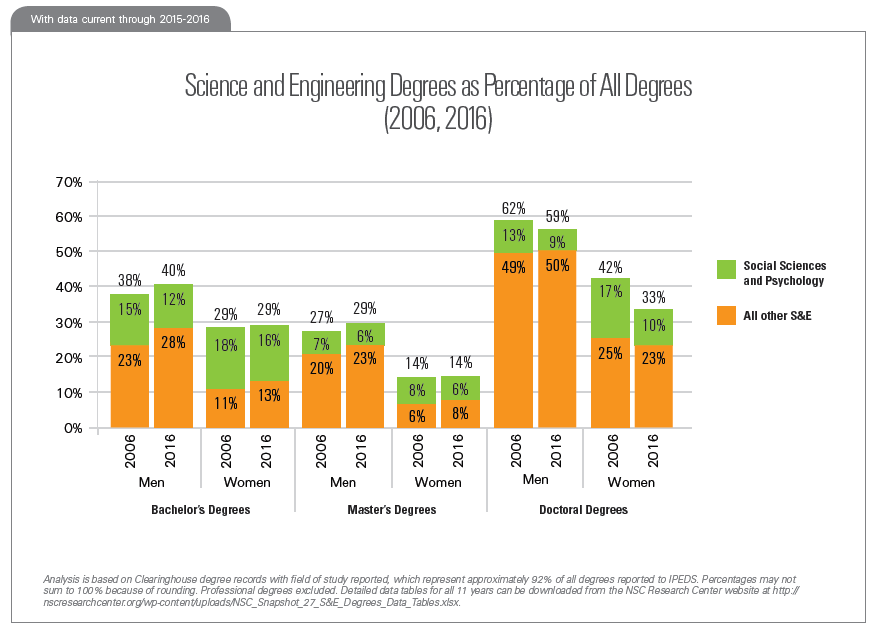
The definition of science and engineering used in this snapshot includes social sciences and psychology and is based on classifications used by the National Science Foundation. Professional degrees, such as MD, DMD, and JD, are excluded from this analysis of doctoral degrees.
Gender Distribution by Degree Level
In 2016, women earned 49 percent of all S&E bachelor’s degrees, 42 percent of S&E master’s degrees, and 39 percent of S&E doctoral degrees. However, there was considerable variation among specific disciplines, as shown in subsequent exhibits.

S&E by Discipline: Bachelor’s Degrees
From 2006 to 2016, the share of bachelor’s degrees earned by women increased in only two of the seven science and engineering disciplines shown in the chart. However, one of the disciplines in which women gained ground was engineering, where they saw a two percentage point increase from 2006 to 2016. In all years studied, women earned the majority of bachelor’s degrees in biological and agricultural sciences and social sciences and psychology.
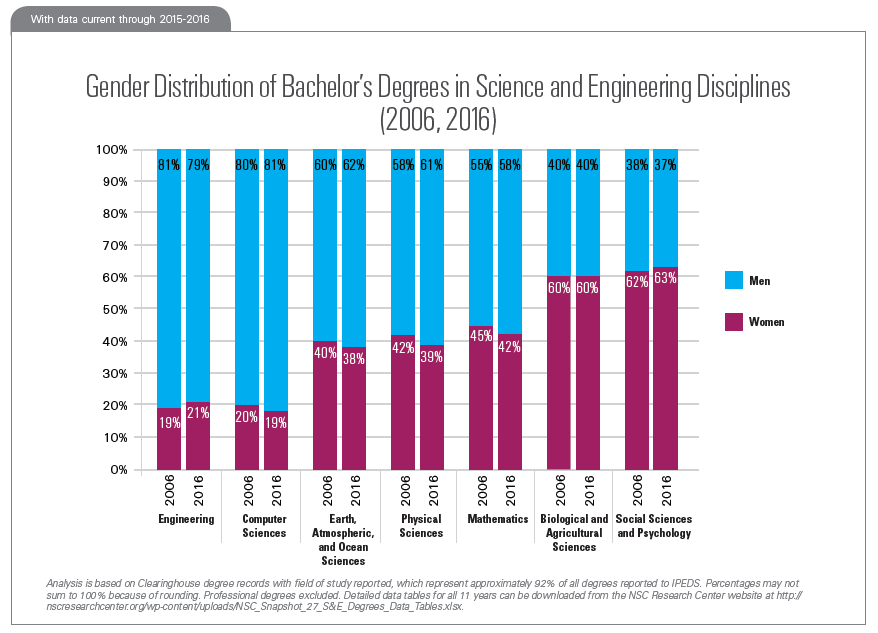
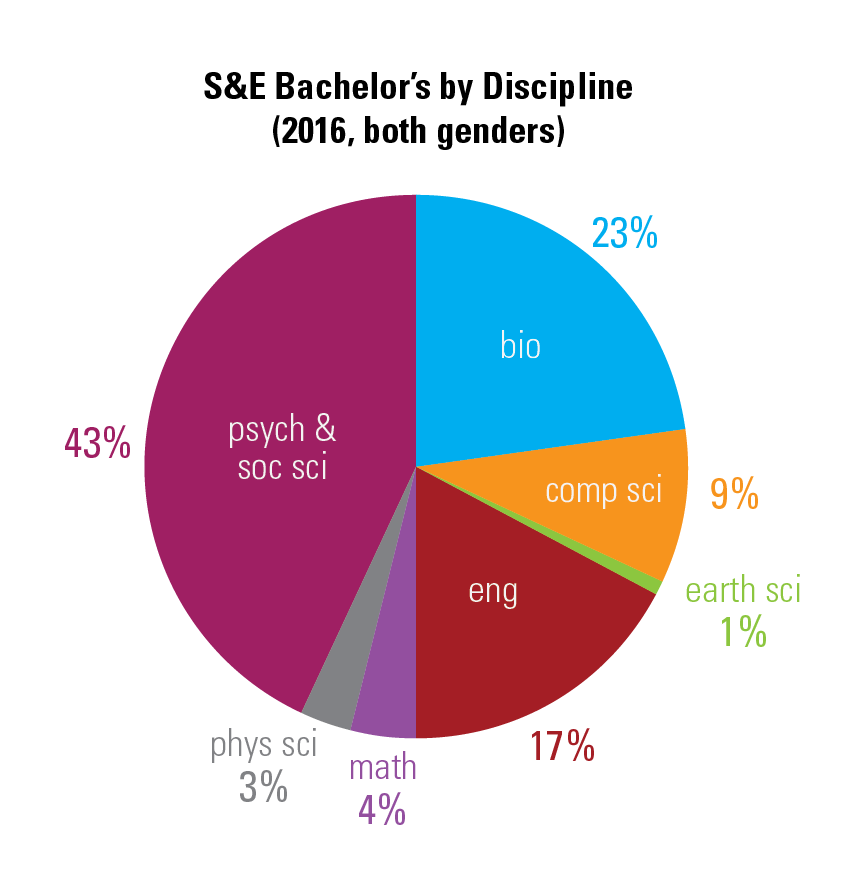
S&E by Discipline: Master’s Degrees
From 2006 to 2016, the share of master’s degrees accounted for by women increased in three S&E disciplines. The biggest increase occurred in computer sciences, where the share of master’s degrees earned by women grew three percentage points. The biggest decrease occurred in social sciences and psychology, where the share of master’s degrees earned by women dropped four percentage points.
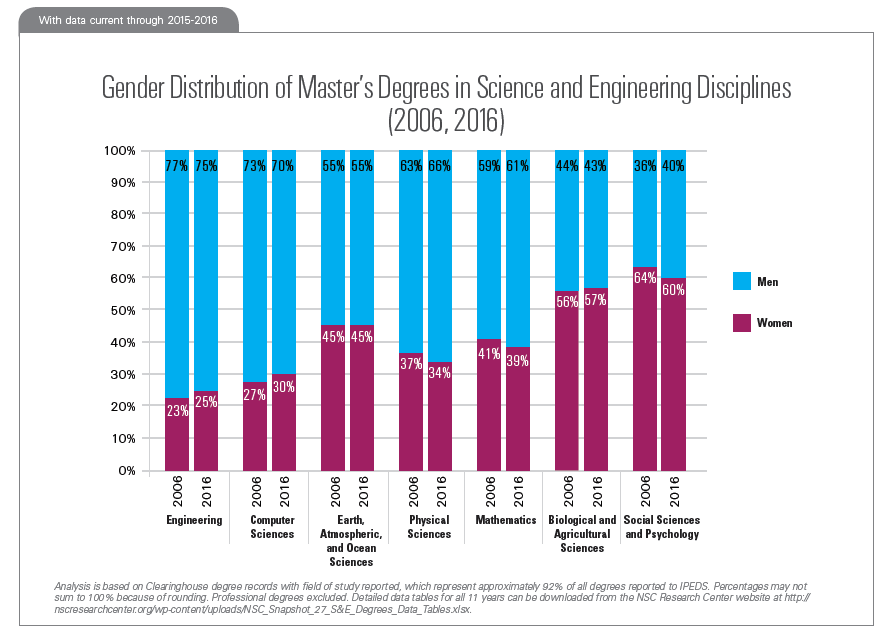
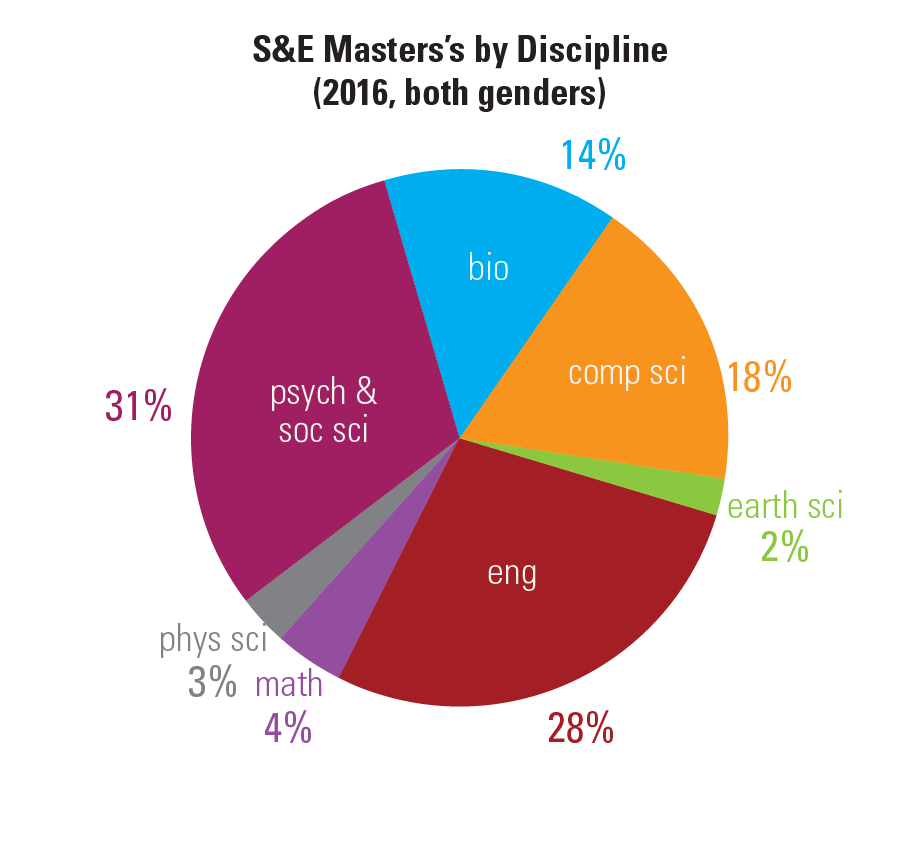
S&E by Discipline: Doctoral Degrees
From 2006 to 2016, the share of doctoral degrees earned by women increased in four S&E disciplines. In two disciplines (Engineering and Biological/Agricultural Sciences), the share of doctoral degrees earned by women increased by four percentage points.
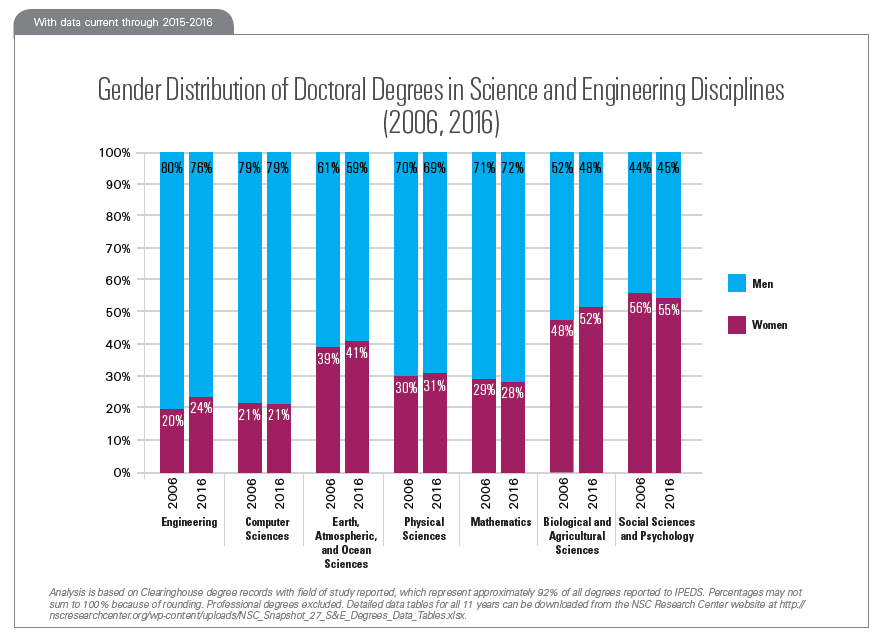
Professional degrees, such as MD, DMD, and JD, are excluded from this analysis of doctoral degrees.
